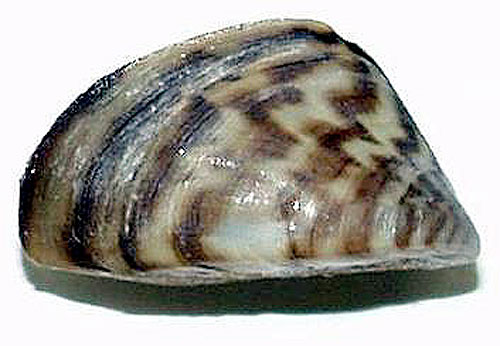 This article highlights some of the impacts zebra mussels have had on the Great Lakes ecosystem. The authors tested the hypothesis that feeding ecology and depth distribution of lake whitefish have changed with the establishment of dreissenid mussels in the Great Lakes.
This article highlights some of the impacts zebra mussels have had on the Great Lakes ecosystem. The authors tested the hypothesis that feeding ecology and depth distribution of lake whitefish have changed with the establishment of dreissenid mussels in the Great Lakes.
 |
| Lake Whitefish |
Contemporary samples of lake whitefish diets and catch records along with isotopic signatures of lake whitefish and benthic invertebrate tissues were contrasted with previously unreported historic data to demonstrate a greater reliance of lake whitefish on nearshore resources following dreissenid colonization.
Lake whitefish diets were stable over the available 50 year record previous to zebra mussel invasion (1947-1997). After zebra mussel establishment (2001-2005), there was a sudden change in isotopic signatures (3% enrichment in 13C and 1% in crease in 15N). The shifts in signatures coincide with shifts in mean depth of capture of lake whitefish towards the nearshore.
Figure 4 illustrates how the isotopic signatures of lake whitefish have changed after zebra mussel invasion. From this figure it's easy to see the increase in δ13C over time after invasion suggesting more littoral carbon sources relative to pre-invasion samples. There is also a noticeable decline in δ15N after invasion suggesting possible restructuring of food chains or trophic levels OR a significant dietary shift in lake whitefish relative to pre-invasion lake whitefish samples.
 |
Fig. 7 Seasonal diet composition of lake whitefish in South Bay, Lake Huron, collected in a 1947 and b 2005. Predominantly profundal prey are solid shades; predominantly littoral prey are patterned segments; pelagic prey (primarily Bythotrephes) are open segments with checkerboard pattern. Numbers above bars are percentage of fish collected with stomach contents. “Avg.” is the average diet composition over the entire year, weighted by the percentage of fish with stomach contents. Depth zone 3 is >30 m depth, as per McNickle et al. (2006). |
Figure 7 has a lot of information packed into it. The main point is to focus on shifts in the dietary components pre and post zebra mussel invasion. Lake whitefish diets have gone through a complete overhaul since the invasion. You see pre-invasion diets shift from primarily diporeia, sphaeriidae and chironomids (more pelagic prey) to gastropods, dressenids and ephemeropterans (more littoral prey). This supports the isotope data compiled in Figure 4.
Dietary shifts in the lake whitefish could mean drastic changes in energy flow, potentially impacting their health and condition. This could have huge implications on the lake whitefish fishery as there may be fewer, and potentially smaller fish, thus reducing catch quotas and increasing fishing efforts.
This study was first to report changes in the carbon source available to lake whitefish associated with restructured benthic communities after the appearance of dreissenid mussels. This study contributes to a growing body of work that demonstrates the ecological insights that can be gained through isotopic analysis of archived fish bony tissues in ecosystems that have experienced significant levels of disturbance.
Reference:
Rennie, M.D., Sprules, W.G., Johnson, T.B. (2009) Resource switching in fish following a major food web disruption. Oecologia 159(4): 789-802.














